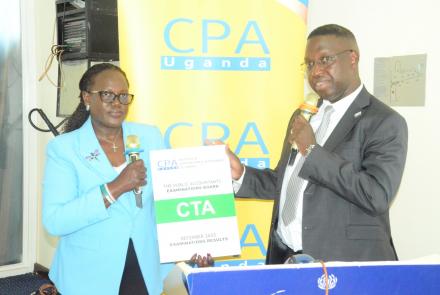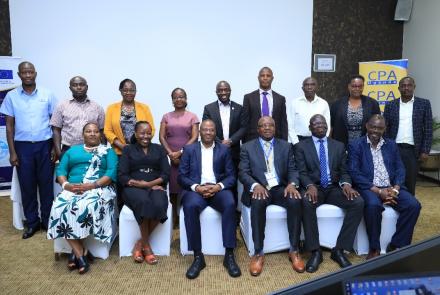One of the most significant enhancements in auditor reporting in the recent past, at the heart of the call from investors and other users of audited financial statements for more entity-specific and relevant information, is the reporting of key audit matters. The new International Standard on Auditing (ISA) 701, Communicating Key Audit Matters in the Independent Auditor’s Report, is part of the suite of ISAs known as Reporting on Audited Financial Statements – New and Revised Auditor Reporting Standards and Related Conforming Amendments (the new and revised auditor reporting standards) issued by the International Auditing and Assurance Standards Board (IAASB) in January 2015 effective for audits of financial statements for periods ending on or after December 15, 2016.
Key Audit Matters
ISA 701, whose overall objective is to enhance the value and relevance of the auditor’s report, defines key audit matters (KAM) as those matters that, in the auditor’s professional judgment, were of most significance in the audit of the financial statements of the current period. KAM are selected from matters communicated with those charged with governance. The ISA applies both to audits of financial statements of listed entities and in circumstances when the auditor otherwise decides to communicate key audit matters in the auditor’s report; but it also applies when the auditor is required by law or regulation to communicate key audit matters in the auditor’s report. The standard is therefore relevant to different sized entities and all practitioners, including small- and medium-sized practices (SMPs).
In adopting the requirements of ISA 701, the Institute of Certified Public Accountants of Uganda (ICPAU), through its Practices Statement- PS1/16: ‘Forming an Opinion and Reporting on Financial Statements’ requires an auditor to communicate KAM in the auditor’s report for all audits of financial statements of publicly accountable entities.[1] In principle therefore, ISA 701 is mandatory for audits of complete sets of general-purpose financial statements of publicly accountable entities, with voluntarily application allowed for entities other than publicly accountable entities.
How to Determine KAM
ISA 701 includes a ‘judgment-based decision-making framework’ to assist auditors in determining which matters should be communicated as KAM. Therefore the standard is intended to address both the auditor’s judgment as to what to communicate in the auditor’s report and the form and content of such communication with the ultimate purpose of communicating KAM being the need to provide greater transparency about the audit that was performed. The judgment-based decision-making framework’ implied here can be illustrated as follows:
- Matters communicated with those charged with governance - KAM are determined from those matters that the auditor has communicated with those charged with governance (TCWG) in the normal course of the audit. ISA 260 (Revised), Communication with Those Charged with Governance, sets out requirements for the auditor to communicate significant findings from the audit with TCWG. ISA 220, Quality Control for an Audit of Financial Statements, establishes requirements for the engagement partner in relation to undertaking appropriate consultation on difficult or contentious matters. This includes discussing significant matters arising during the audit engagement with the engagement quality control reviewer (ECQR) for audits of financial statements of listed entities, and those other audit engagements, if any, for which the firm has determined that an EQCR is required. Other ISAs also set requirements for auditors to communicate with TCWG for example in respect to; matter regarding related party transactions, limitations on group audits and consultations on difficult or contentious matters.
- Those matters that required significant auditor attention in performing the audit - Indications that a matter may be a matter that required significant auditor attention in performing the audit are:
- The matter posed challenges to the auditor in obtaining sufficient appropriate audit evidence;
- The matter posed challenges to the auditor in forming an opinion;
- The matter involved difficult or complex auditor judgments of areas of complexity and significant management judgment in the financial statements, resulting in the auditor’s overall audit strategy, resource allocation and extent of audit effort being affected
An auditor determines which matters, from those that have been communicated with TCWG, required significant auditor attention in performing the audit by taking into account the following:
- Areas of higher assessed risk of material misstatement, or significant risks identified in accordance with ISA 315 (Revised), Identifying and Assessing the Risks of Material Misstatement through Understanding the Entity and Its Environment;
- Significant auditor judgments relating to areas in the financial statements that involved significant management judgment, including accounting estimates that have been identified as having high estimation uncertainty (for example depending on the circumstances of a specific entity, impairment of goodwill or the fair value of a particular financial instrument). Complex estimates may require the involvement of both a management’s expert and an auditor’s expert. The auditor also considers accounting policies and practices that are not consistent with others in the entity’s industry; and
- Significant events or transactions that occurred during the period. Significant events and transactions may include significant transactions with related parties, significant transactions outside the normal course of business and unusual transactions. Significant economic, accounting, regulatory, industry, or other developments that affected management’s assumptions or judgments may also result in a matter requiring significant auditor attention.
- Those matters of most significance in the audit of the financial statements of the current period The final step in determining KAM is selecting from (b) above, those current-period matters that were of most significance in conducting the audit. This is a matter of professional judgment and may be affected by the size and complexity of the entity, the nature of its business and environment, and the facts and circumstances of the audit engagement (that is, entity-specific or audit-specific factors may influence the auditor’s judgment). ISA 701 provides guidance on factors that the auditor may consider in determining ‘most significance’, including:
- The nature and extent of communication with TCWG, as more in-depth, frequent or robust interaction may occur on more difficult or complex matters;
- The importance of the matter to intended users’ understanding, in particular its materiality;
- The nature of the underlying accounting policy or the complexity or subjectivity of management’s selection of an accounting policy compared to other entities in the industry;
- The nature and materiality, quantitatively or qualitatively, of corrected and accumulated uncorrected misstatements due to fraud or error related to the matter;
- The nature and extent of audit effort needed to address the matter, including the extent of specialised skill or knowledge needed and the nature of consultations required outside the engagement team;
- The nature and severity of difficulties in applying audit procedures, evaluating the results of those procedures, and obtaining relevant and reliable evidence on which to base the auditor’s opinion, in particular as the auditor’s judgments become more subjective;
- The severity of any control deficiencies identified relevant to the matter
- Whether the matter involved a number of separate, but related, auditing considerations
Communicating KAM
KAM are described in a separate section of the auditor’s report, under the heading ‘Key audit matters’, using appropriate subheadings for each KAM described.
The introductory statement must state as follows;[2] “KAM are those matters that, in the auditor’s professional judgment, were of most significance in the audit of the financial statements of the current period, and These matters were addressed in the context of the audit of the financial statements as a whole, and in forming the auditor’s opinion thereon, and the auditor does not provide a separate opinion on these matters.”
The description of each KAM in the auditor’s report shall include;
- Why the matter was considered to be one of most significance in the audit and, therefore, determined to be KAM;
- How the matter was addressed in the audit, for example descriptions of the auditor’s approach, a brief overview of procedures, outcome and key observations, or a combination of these; and
- a reference to the related disclosure(s), if any, in the financial statements;
It is however, important to note that in drafting and communicating KAM, the users of the auditor’s report need to be considered, that is their level of knowledge and understanding of auditing and accounting terms vis a vis the objective of communicating the KAM. The auditor should take care that the language used in the description of KAM:
- Is entity-specific and audit-specific;
- Does not imply that any audit issues were not resolved or that there is a discrete opinion on separate elements of the financial statements
- Leads to succinct, insightful and balanced descriptions, with a limited use of highly technical audit terms;
- Is not standardised or generic
KAM not required to be communicated in Auditor’s Report
There are two circumstances under which a matter determined to be KAM is not required to be communicated in the auditor’s report:
- Where law or regulation precludes public disclosure about the matter, or
- In extremely rare circumstances, where the auditor determines that the adverse consequences of the disclosure would reasonably be expected to outweigh the public interest benefit of the communication.
Matters giving rise to a modified opinion or a material uncertainty regarding going concern are by their nature KAM. However, ISA 701 states that these matters will not be described as KAM as these matters are included in their own sections in the auditor’s report in accordance with ISA 705 (Revised), Modification to the Opinion in the Independent Auditor’s Report and ISA 570 (Revised), Going Concern, respectively.
The Professional Standards Committee of Council of ICPAU discussed the prevalent misapplication of KAMs especially among Small and Medium Practices (SMPs). It was observed that a number of SMPs were either omitting this section for even entities that were publicly accountable, while those that endeavored to include ‘KAM’ were instead disclosing management letter concerns. The Committee considered whether further support could be developed to assist SMPs with the changes. The Committee hence agreed that it would be helpful if sample extracts of KAMs included in some of the auditor’s reports in issue could be shared. The examples herein after are intended to guide practitioners in developing KAM, which should be relevant and tailored to the circumstances of each entity and engagement.
Please note that this selection was based on reports that are publicly available.
|
SN |
ITEM |
ENTITY |
YEAR END |
|
1 |
Impairment of loans and advances to customers |
Bank of Baroda (Uganda) Limited Annual Report 2017 (page 26-28) |
31 December 2017 |
|
2 |
Goodwill and Other Intangible assets |
31 December 2017 |
|
|
3 |
Provisions and contingent liabilities |
British American Tobacco Uganda (BATU.ug) 2017 Annual Report (page 37) |
31 December 2017 |
|
4 |
Revenue recognition |
31 December 2017 |
|
|
5 |
Taxation |
31 December 2017 |
|
|
6 |
Information Technology systems and controls |
|
|
|
[1] The ICPAU Guidelines for Implementation of the IFRS for SMEs (2009), define A small and medium sized entity as an entity:
a) That does not have public accountability;
b) That publishes general purpose financial statements for external users. External users include but are not limited to; Owners not involved in day to day management; Lenders; Existing and potential suppliers; Existing and potential customers; Credit rating agencies; The Uganda Revenue Authority; and Regulatory bodies such as Bank of Uganda, Electricity Regulatory Authority and the Uganda Insurance Commission.
c) Whose debt and equity instruments is NOT traded in a public market (a domestic or foreign stock exchange or an over-the-counter market, including local and regional markets), or is NOT in the process of issuing such instruments for trading in a public market; and
d) That does NOT hold funds in a fiduciary capacity for a broad group of outsiders as one of its primary businesses such as banks, credit unions, insurance companies, securities brokers/dealers, mutual funds and investment banks.
[2] (ISA 701.11)




